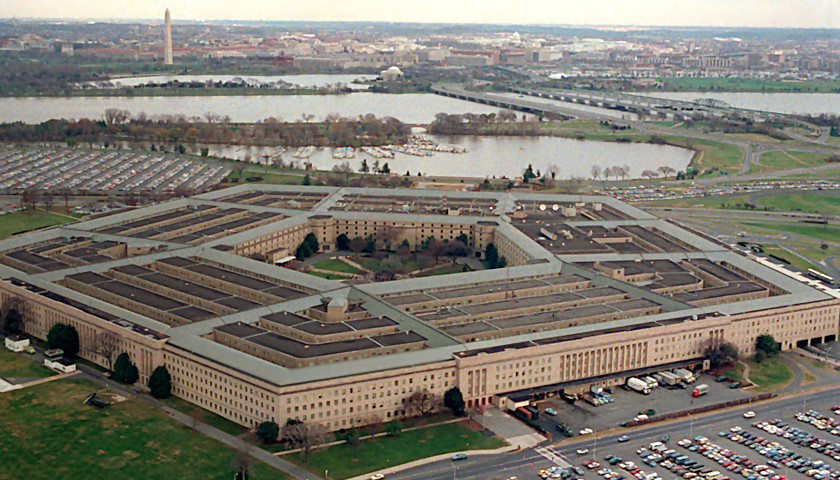by Morgan Murphy
Forget the $500 hammer. The newest report from the Government Accountability Office puts the cost of America’s ailing Lightning II F-35 joint strike fighter at an estimated $2 trillion.
Have all those zeros bought the American taxpayer an invincible flying machine?
No. The program is so crippled by cost overruns and delays that Snoopy and his doghouse seem more likely to get off the ground.
You might think the largest procurement program at the Department of Defense would also be the best run. Instead, the Lightning II, also called the F-35, remains one of the biggest embarrassments at the Pentagon.
 Last week, Republican Rep. Matt Gaetz of Florida pressed the Air Force on the mission readiness of its latest and most capable strike fighter.
Last week, Republican Rep. Matt Gaetz of Florida pressed the Air Force on the mission readiness of its latest and most capable strike fighter.
Gaetz’s line of questioning revealed that the full mission-capable rates for the F-35 range from an abysmal 14.9 percent to a likewise failing 36.4 percent. At best that means of America’s 630 F-35s, only 229 are fully ready to fight tonight.
Sadly, Gaetz follows in a long line of bipartisan shock from the Hill on the programs’ cost overruns and delays.
In 2014, the Pentagon’s then-Under Secretary for Acquisition Frank Kendall (now Secretary of the Air Force), called the Joint Strike Fighter program “acquisition malpractice.”
In 2016, then-Senate Armed Services Chairman John McCain called it a “scandal and a tragedy.” In 2021, my former boss, then-Acting Secretary of Defense Christopher Miller dubbed the F-35 “a piece of [excrement].” That same year, then-House Armed Services Committee Chairman Adam Smith called the program a “rathole.”
How did we get here?
Drawing Board to Runway Problems
Conceived back in the 1990s, the F-35 “joint strike fighter” was meant to be an affordable platform which could be shared across services and among our NATO allies. “Joint” means it comes in different flavors for the Air Force, Marine Corps, and Navy.
The program officially started in 2001, so you might be forgiven for thinking we’ve long since bought the 2,500 birds Uncle Sam wants in his aviary. Yet more than 20 years later, the U.S. has just 630 Lightning IIs.
Problems with early planes ranged from metal cracking to fuel tanks vulnerable to (no, I’m not making this up) lightning strikes.
The Lightning II has been anything but lightning fast to get to production. In fact, it took so long to reach technological maturity that the fifth-generation aircraft needed a modernization program to update what was supposed to be the modernized warbird.
Now the modernization program itself is behind schedule and over budget. Block 4 was estimated to cost $10.6 billion and wrap up in 2026. In May last year, the Government Accountability Office revealed the Block 4 costs have ballooned to $16.5 billion and won’t be done until 2029.
The delayed procurement of the F-35 is one reason the U.S. Navy is still buying F/A-18s, a fourth-generation fighter that first flew back when commercial planes still boasted ashtrays.
If You Have To Ask You Can’t Afford It…
What is even worse than the buying record of the F-35? Operating and maintaining the suckers.
When media reports in 2018 revealed that the Air Force might cut its orders by a third (590 fighters), the officer in charge of the program said simply, “If you can afford to buy something but you have to keep it in the parking lot because you can’t afford to own and operate it, then it doesn’t do you much good.”
Since he uttered those words things haven’t gotten much better. Sustainment costs have risen a whopping 44 percent since 2018. The Department of Defense believes the Air Force will pay $6.6 million annually to operate and sustain each individual F-35. The original target was $4.1 million.
To control costs, the Pentagon has taken to another terrible idea: reducing flight hours. Since 2020, the estimate of flight hours the F-35 fleet would fly has dropped by 21 percent, from 382,376 to 300,524. This cost saving comes directly at the expense of pilot training and readiness — a fatal tradeoff if the U.S. actually has to use its 5th generation strike fighters in a future war.
Major Shakeup Needed
Sadly, the F-35 program is not alone among the Pentagon’s failures in acquisition and sustainment (the military’s way of saying “buying stuff and maintaining it”). Major reform is needed as America ramps up to compete with China.
Should Donald Trump return to the White House in 2025, one of the first acts of his military civilian leaders should be wholesale reform of the acquisition process at the Department of Defense. A good place to start would be working with Congress or issuing executive orders to redefine roles and responsibilities, push oversight authority as far down the chain of command as possible, and lengthen the tenure of those in key oversight roles.
– – –
Morgan Murphy is a former DoD press secretary, national security adviser in the U.S. Senate, a veteran of Afghanistan.








